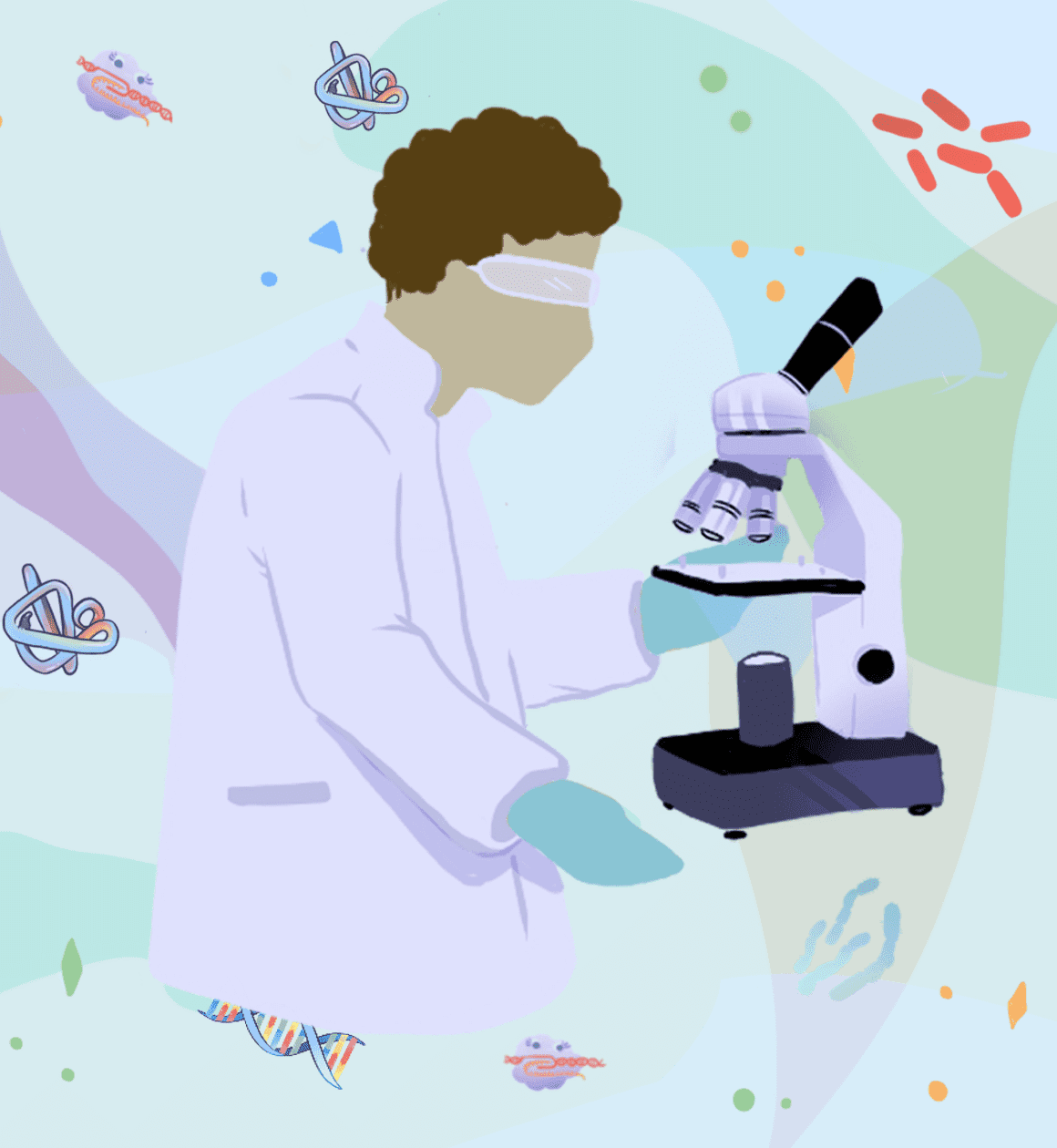In this section of CRISPR Made Simple, learn about genes and DNA.
-
Key Takeaways
Genes are made out of DNA and have instructions for making proteins. Gene variants help determine our unique traits, but some can also lead to disease. Scientists can edit genes using CRISPR.
-
Vocabulary
Trait, DNA, gene, protein, heredity, genome, gene variant, genetic disease
How did the elephant get its trunk?
Why are different organisms the way they are? How do they get their unique traits? How did the elephant get its mighty trunk? Why are some roses red and others yellow?
Many traits are shaped by the environment and what the organism experiences. A saguaro cactus needs plenty of sun to grow big. Flamingos won’t turn pink unless they eat lots of little pink shrimp! Traits are also shaped by DNA and genes.
What is DNA?
Remember that organisms are made of billions of microscopic cells. DNA is the instruction manual that tells each cell what to do. DNA is built out of four different kinds of pieces. They are represented by the letters A, T, C, and G. The letters are linked together to form DNA strands, which twist into a shape called a double helix.
What are genes?
A gene is a piece of DNA that includes instructions to make a protein. Proteins are like little machines that do most of the work in the cell. They also help give cells their shape and structure. The length and letter sequence of DNA is the code that determines the size, shape, and job of a protein.
You get one copy of every gene from each of your biological parents. That means you have two copies of every gene. Genes are sometimes called, “the unit of heredity.” Heredity means passed from parents to children. A gene is a single piece of biological information that we get from our biological parents. The complete set of genes that an organism has is called a genome.
Organisms of the same species share the same basic genes. But organisms sometimes have different versions, or variants, of a gene. Gene variants are changes in some of the DNA letters of a gene. For instance, every person has genes that make them grow hair! But we have gene variants — a few changes in the DNA letters — that make our hair black, brown, red, or blond.
Our unique combination of gene variants is part of what makes us who we are! Many gene variants are harmless, but some can cause diseases. Diseases caused by harmful gene variants are called genetic diseases.
What is gene editing?
You may have heard the term “gene editing” or "genome editing" on the news or in science class. But what does it mean? Editing means making a change. You can think of a gene as a long string of DNA letters. Editing means taking out, adding, or changing letters, like you do when you are typing on a computer, mobile phone, or tablet. Since the DNA letters of genes control traits, a scientist can change the traits of an organism by editing its genes.
There are many reasons why a scientist might want to edit an organism’s DNA:
- Research: scientists can learn about what jobs a gene does by making changes and seeing what happens
- Health: editing genes can help treat diseases
- Farming and food: editing genes could help us grow more food or help crops fight diseases
Recently, scientists discovered a game-changing new tool for gene editing. Read all about CRISPR (pronounced “crisper”) in the next section!
Summary
Inside of every cell there are instructions for making the unique traits of each organism. An instruction for a single protein is called a gene. Genes are made of DNA. DNA has four building blocks that come together to form a double helix. Genes are passed down from parents to children. This is called heredity. A genome is the full set of genes an organism has. Sometimes genes have small changes in their DNA that are called gene variants. Scientists can make changes, or edits, to genes on purpose by changing DNA. Gene editing can be used to study what genes do, treat diseases, or help farmers grow more food. CRISPR is an important tool for gene editing.
Think about it!
Things you can try at home
Illustration use and attribution
The illustrations for CRISPR Made Simple are licensed under a Creative Commons Attribution-NonCommercial-ShareAlike 4.0 International License, and can be used and adapted for non-commercial, educational purposes. ALL modifications and uses must follow the CC BY-NC-SA 4.0 license.

